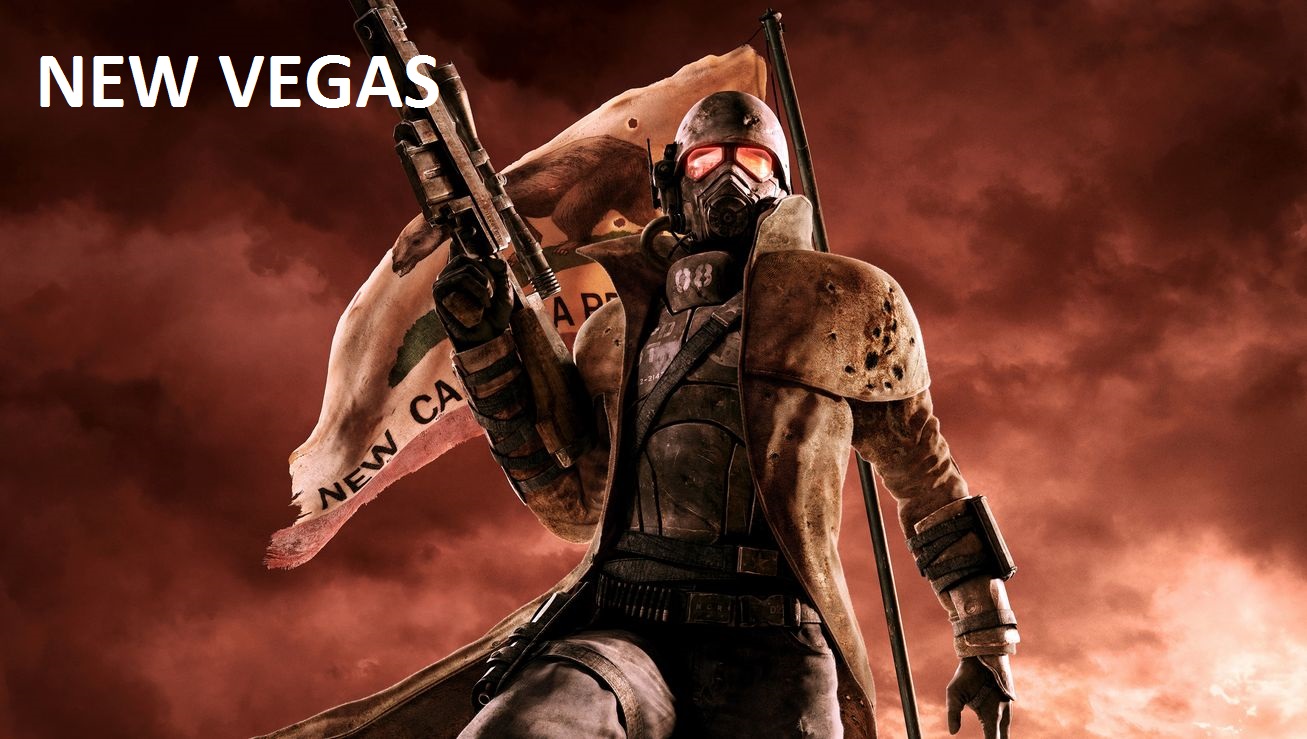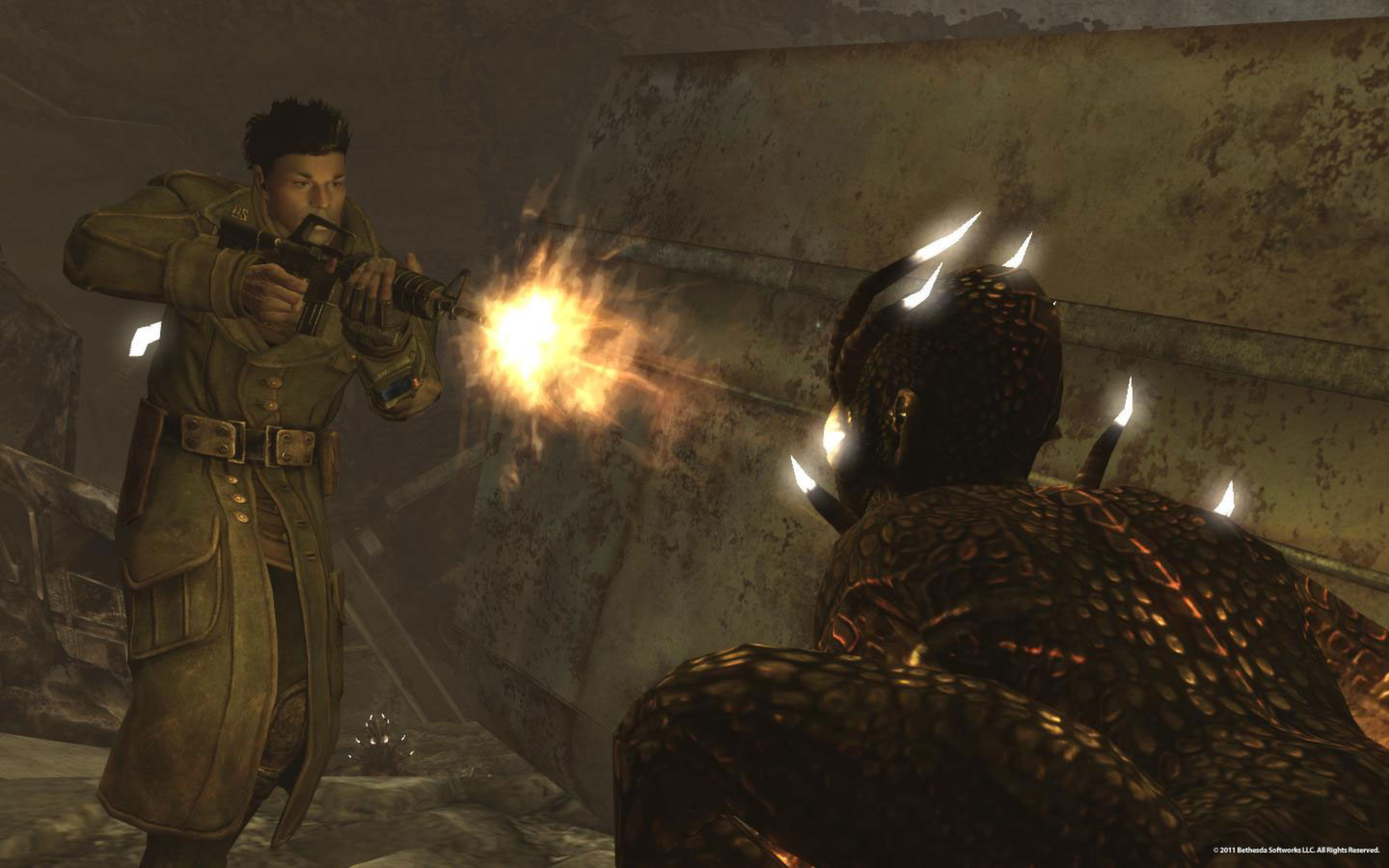
Compared to the oppressive grey of the Capital Wasteland, the Mojave is positively colourful. New Vegas shares an engine with Fallout 3, but it has a very different look and feel. The bleak urban devastation of post-apocalyptic Washington DC gives way to dust, deserts, and cowboys. New Vegas itself is one of the most vibrant cities in the series, relatively unscathed by the nuclear fire that blanketed the world.
New Vegas is my favourite of the two Bethesda-era Fallout games. It was developed by RPG veterans Obsidian, of Pillars of Eternity fame, and improves many of Fallout 3’s weak points. It has companions with personalities and meaningful reasons for following you. Quests are more open-ended, with multiple ways to complete them. Hardcore mode introduces survival elements. And the Mojave is full of factions whose influence you can earn, or lose, depending on the choices you make.
It’s a much deeper role-playing experience overall. Thanks to talented writers and designers like Josh Sawyer and Chris Avellone, the dialogue is better and the characters are richer. But, as much as I love it, I think Fallout 3 does a better job of evoking the feeling of being in a post-apocalyptic world. In many places, the Mojave looks much like it does today: a desert. Nothing in its bright, sun-baked landscape quite matches the eeriness of bomb-blasted downtown Washington DC.

The main story in Fallout 3 is a bit of a mess, with one of the least satisfying endings in any game I’ve ever played, but the central narrative of New Vegas is much stronger—and there are more interesting ways to resolve it. Taking sides has a big impact on how the story plays out, whether you fight for factions like the NCR and Caesar’s Legion, or decide to stay neutral. And if you don’t care about the main story, there are dozens of brilliant side quests hidden away in the wasteland.
Although the Capital Wasteland makes for a more atmospheric setting, New Vegas still has its share of interesting locations and landmarks. There’s the New Vegas Strip itself; a huge, neon-lit monument to excess, whose casinos are filled with NPCs and quests. There’s the backwater town of Goodsprings, which is straight out of a Spaghetti Western. And, of course, the mighty Hoover Dam, which is central to the story. Throw in a selection of brilliant cowboy-themed music and you’ve got a setting with a tonne of personality that’s littered with cool stuff to see and do.

New Vegas also boasts a suite of genuinely brilliant DLC, the best of which were designed by Avellone, who worked on Fallout 2 back in 1998. Lonesome Road takes you to a new area called The Divide, which has been ravaged by earthquakes. Dead Money is a Fallout-flavoured take on The Treasure of the Sierra Madre. Finishing the main game and all the DLC can take a hundred hours or more, making the ‘Ultimate Edition’ of the game, which is often on sale on Steam, great value for money. And that’s without mentioning the thousands of mods out there.
The engine is New Vegas’s only real weakness. The robotic animations, low fidelity environments, and hideous-looking character models are a result of the creaky tech they inherited from Bethesda–but they did their best with it. You can make it look slightly better with mods, but it’s still a hard game to look at with eyes that have been spoiled by games like The Witcher 3 and Grand Theft Auto V. But New Vegas is still a brilliant RPG despite it. Here’s hoping Bethesda give Obsidian the chance to make another sequel after they’ve released Fallout 4.
Keep up to date with the most important stories and the best deals, as picked by the PC Gamer team.
By Andy Kelly
PC Gamer is the global authority on PC games—starting in 1993 with the magazine, and then in 2010 with this website you're currently reading. We have writers across the US, Canada, UK and Australia, who you can read about here.


